I have a the following data:
x <- data.frame('myvar'=c(10,10,9,9,8,8, runif(100)), 'mygroup' = c(rep('a', 26), rep('b', 80)))
I want to describe the data using a box-and-whiskers plot in ggplot2. I have also included the mean using a stat_summary.
library(ggplot2)
ggplot(x, aes(x=myvar, y=mygroup)) +
geom_boxplot() +
stat_summary(fun=mean, geom='point', shape=20, color='red', fill='red')
This is fine, but for some of my graphs, the outliers are so huge, that it's hard to make sense of the total distribution. In these cases, I have cut the x axis:
ggplot(x, aes(x=myvar, y=mygroup)) +
geom_boxplot() +
stat_summary(fun=mean, geom='point', shape=20, color='red', fill='red') +
scale_x_continuous(limit=c(0,5))
Note, now that the means (and medians?) are calculated using only the subset of data that is visible on the graph. Is there a ggplot way to include the outlier observations in the calculation but drop them from the visualisation?
My desired output would be a graph with x limits at c(0,5) and a red dot at 2.48 for group mygroup='a'.


